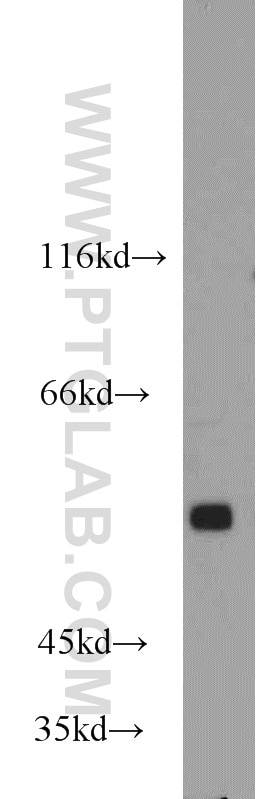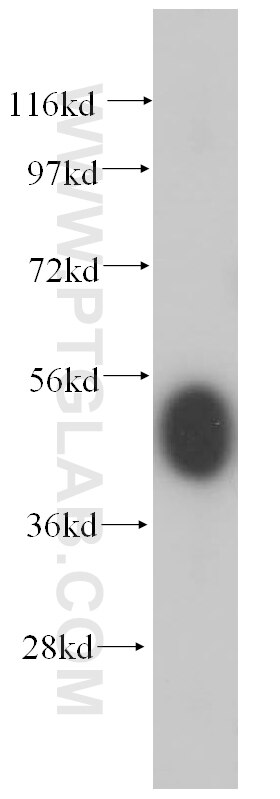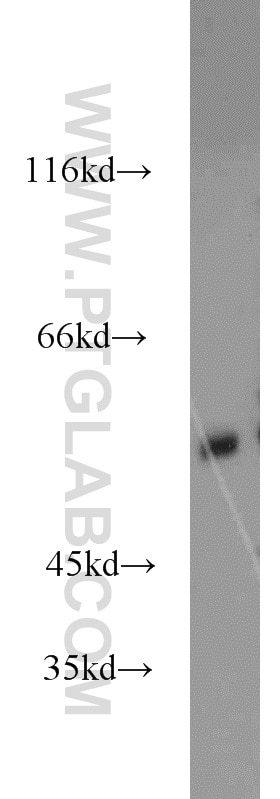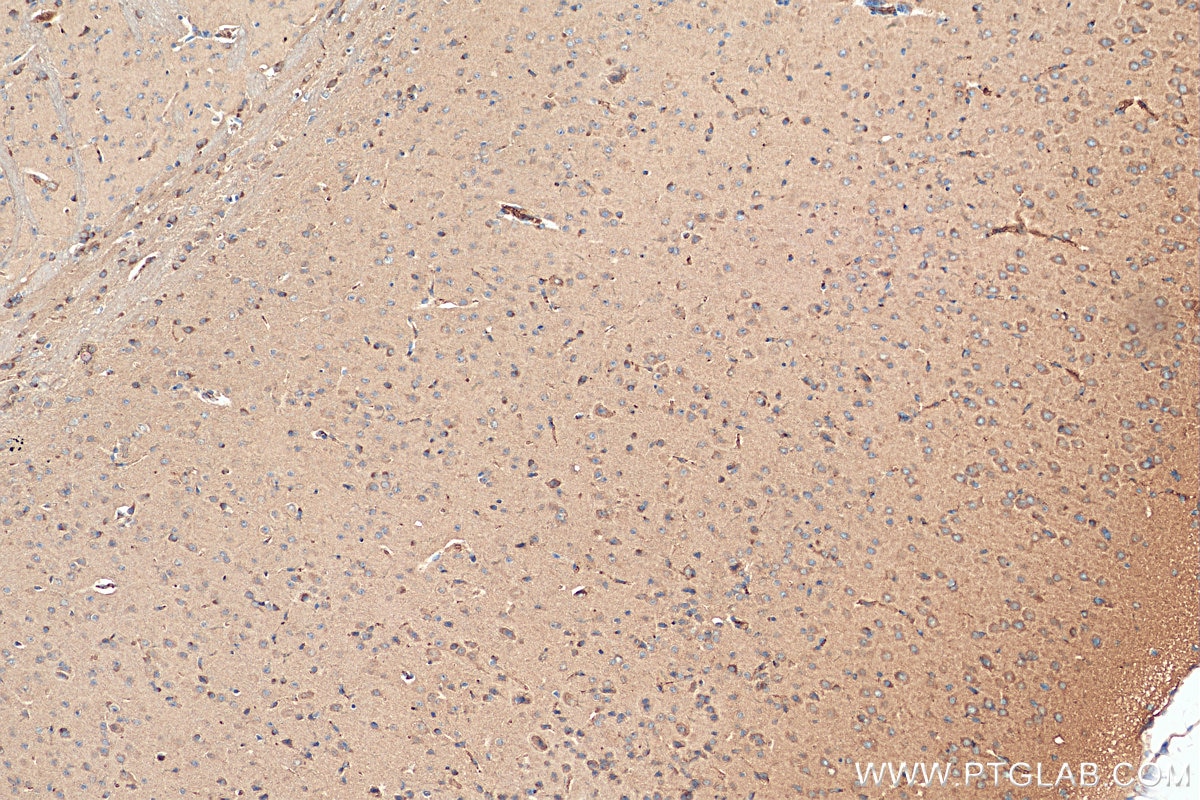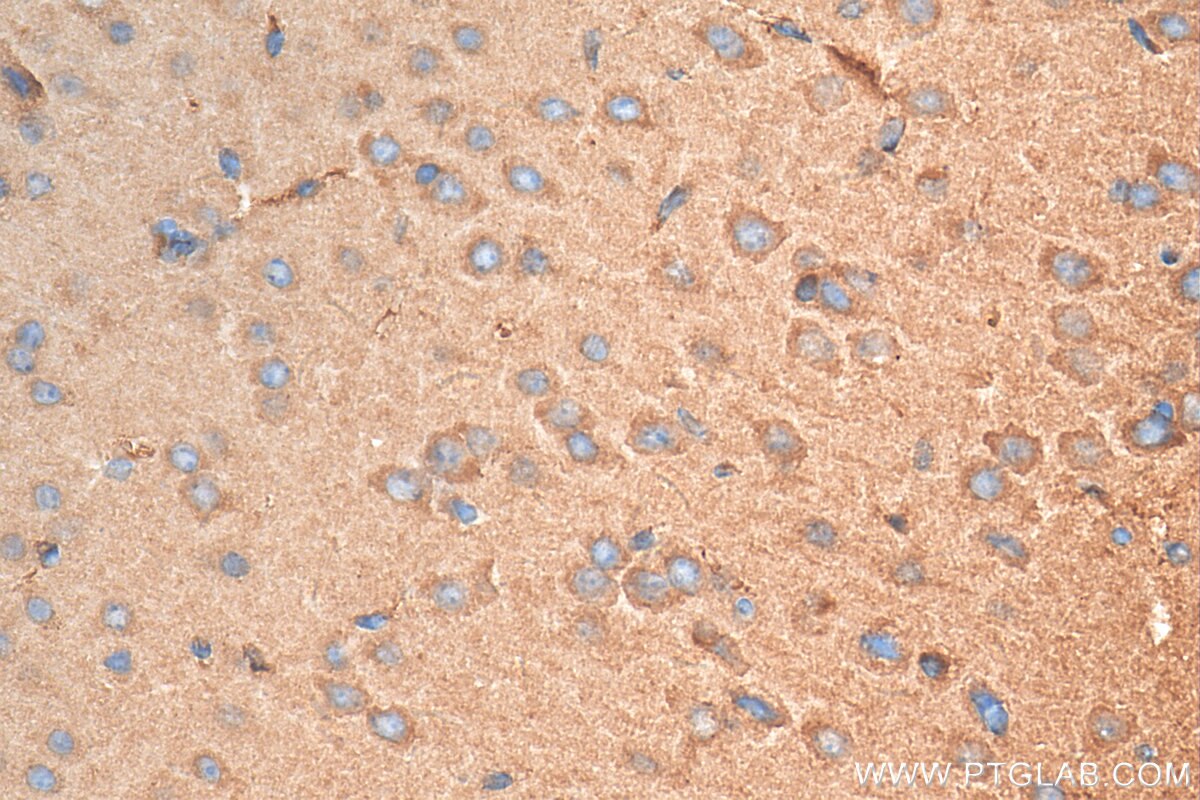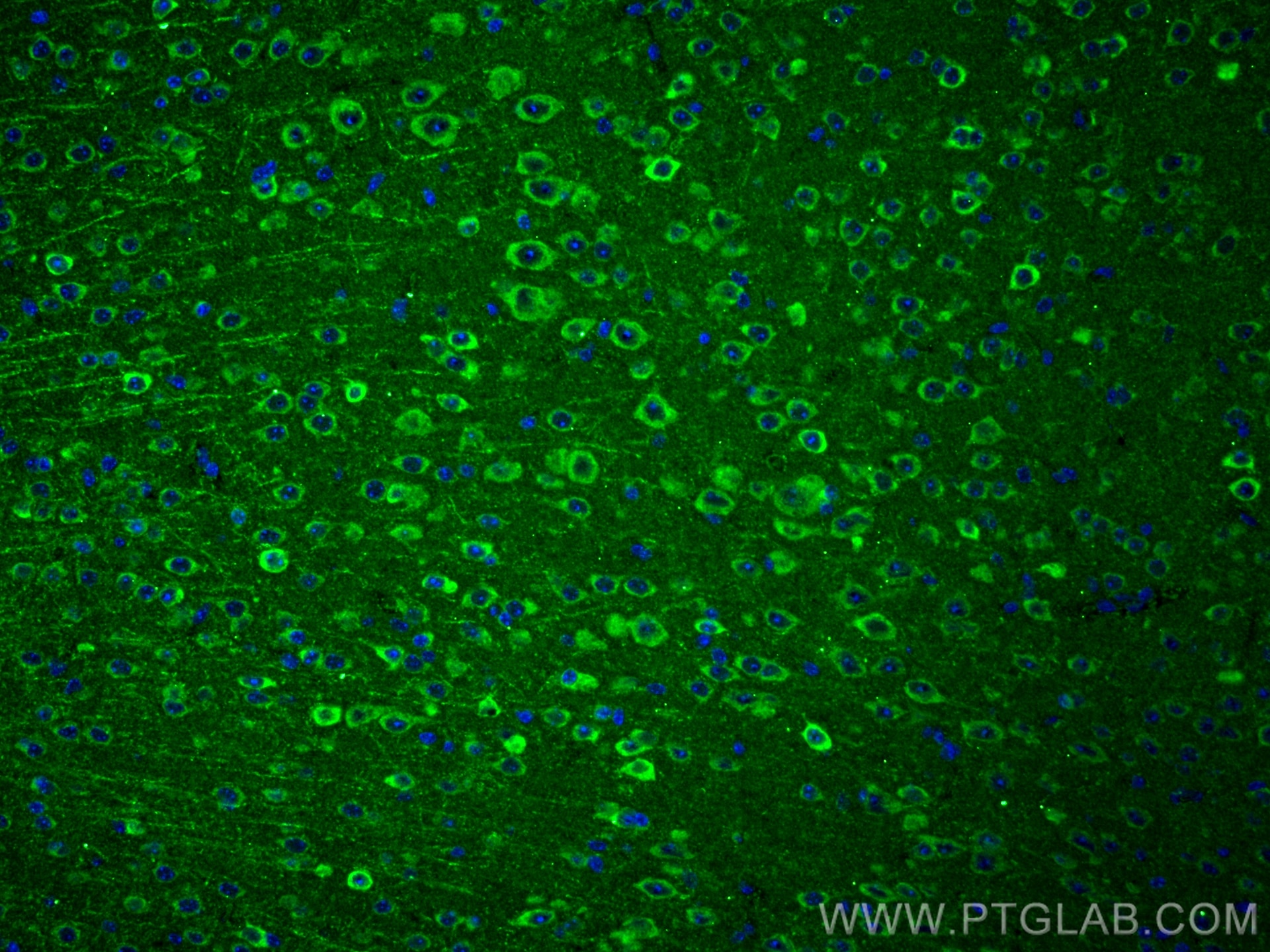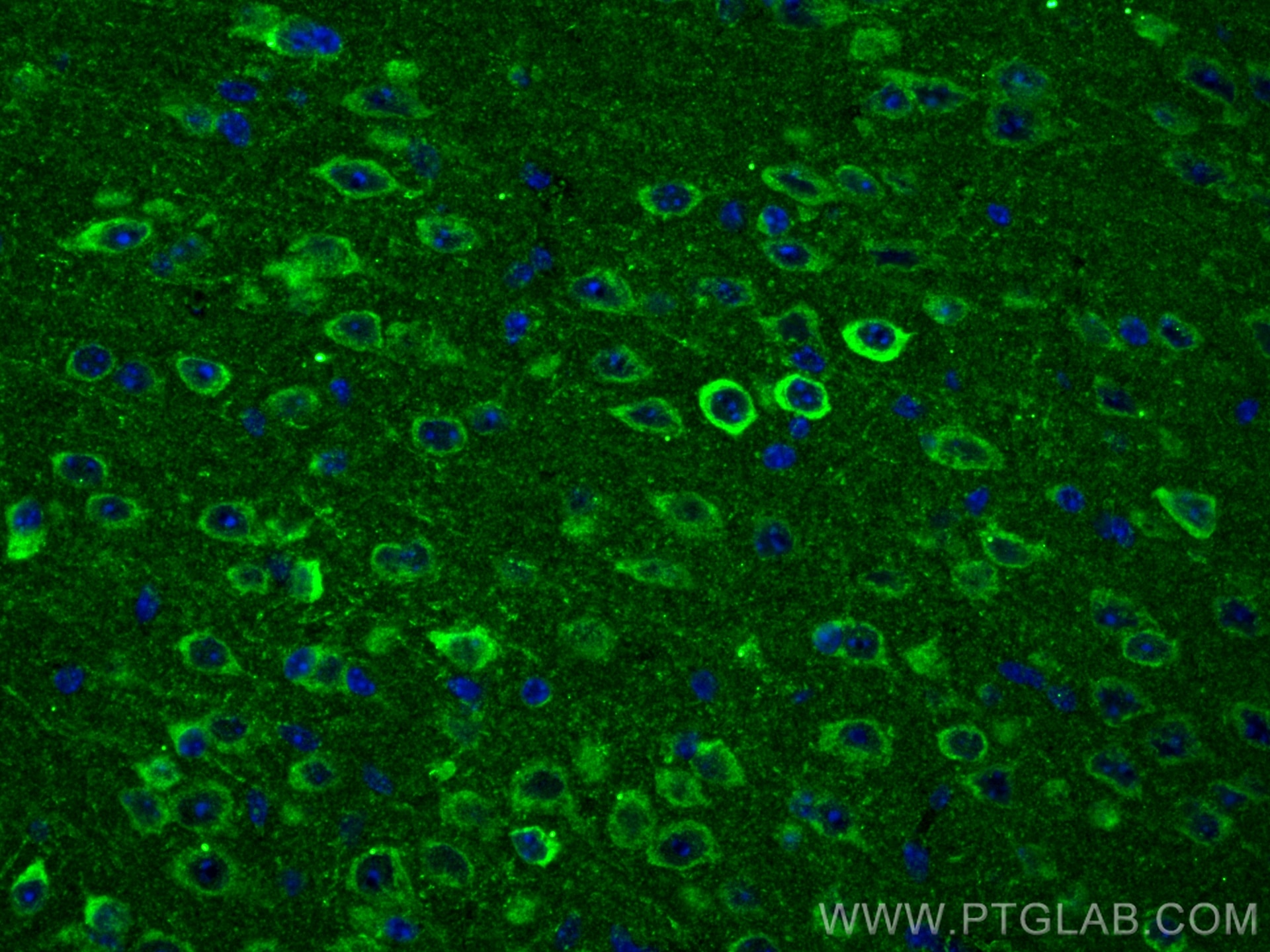- Phare
- Validé par KD/KO
Anticorps Polyclonal de lapin anti-GPR37/Pael-R
GPR37/Pael-R Polyclonal Antibody for WB, IF, IHC, ELISA
Hôte / Isotype
Lapin / IgG
Réactivité testée
Humain, rat, souris
Applications
WB, IHC, IF-P, ELISA
Conjugaison
Non conjugué
N° de cat : 14820-1-AP
Synonymes
Galerie de données de validation
Applications testées
| Résultats positifs en WB | tissu cérébral de souris |
| Résultats positifs en IHC | tissu cérébral de souris, il est suggéré de démasquer l'antigène avec un tampon de TE buffer pH 9.0; (*) À défaut, 'le démasquage de l'antigène peut être 'effectué avec un tampon citrate pH 6,0. |
| Résultats positifs en IF-P | tissu cérébral de souris, |
Dilution recommandée
| Application | Dilution |
|---|---|
| Western Blot (WB) | WB : 1:500-1:3200 |
| Immunohistochimie (IHC) | IHC : 1:50-1:500 |
| Immunofluorescence (IF)-P | IF-P : 1:50-1:500 |
| It is recommended that this reagent should be titrated in each testing system to obtain optimal results. | |
| Sample-dependent, check data in validation data gallery | |
Applications publiées
| KD/KO | See 3 publications below |
| WB | See 9 publications below |
| IF | See 4 publications below |
Informations sur le produit
14820-1-AP cible GPR37/Pael-R dans les applications de WB, IHC, IF-P, ELISA et montre une réactivité avec des échantillons Humain, rat, souris
| Réactivité | Humain, rat, souris |
| Réactivité citée | rat, Humain, souris |
| Hôte / Isotype | Lapin / IgG |
| Clonalité | Polyclonal |
| Type | Anticorps |
| Immunogène | GPR37/Pael-R Protéine recombinante Ag6591 |
| Nom complet | G protein-coupled receptor 37 (endothelin receptor type B-like) |
| Masse moléculaire calculée | 67 kDa |
| Poids moléculaire observé | 50-55 kDa |
| Numéro d’acquisition GenBank | BC040007 |
| Symbole du gène | GPR37 |
| Identification du gène (NCBI) | 2861 |
| Conjugaison | Non conjugué |
| Forme | Liquide |
| Méthode de purification | Purification par affinité contre l'antigène |
| Tampon de stockage | PBS avec azoture de sodium à 0,02 % et glycérol à 50 % pH 7,3 |
| Conditions de stockage | Stocker à -20°C. Stable pendant un an après l'expédition. L'aliquotage n'est pas nécessaire pour le stockage à -20oC Les 20ul contiennent 0,1% de BSA. |
Informations générales
The orphan G protein-coupled receptor GPR37, also known as PAELR (parkin-associated endothelin receptor-like receptor) or ETBR-LP-1 (endothelin B receptor-like protein 1), is a 613 aa, multi-pass membrane protein predominantly expressed in the brain. It is a substrate of parkin (PARK2). When overexpressed in cells, GPR37 tends to become insoluble, unfolded, and ubiquitinated in vivo. Accumulation of the unfolded protein may lead to dopaminergic neuronal death in juvenile Parkinson disease (JPD). This antibody recognizes endogenous GPR37, which migrates as an approximately 50-55 kDa band in SDS-PAGE (PMID:17519329).
Protocole
| Product Specific Protocols | |
|---|---|
| WB protocol for GPR37/Pael-R antibody 14820-1-AP | Download protocol |
| IHC protocol for GPR37/Pael-R antibody 14820-1-AP | Download protocol |
| IF protocol for GPR37/Pael-R antibody 14820-1-AP | Download protocol |
| Standard Protocols | |
|---|---|
| Click here to view our Standard Protocols |
Publications
| Species | Application | Title |
|---|---|---|
Mol Syst Biol Systematic protein-protein interaction mapping for clinically relevant human GPCRs. | ||
Proc Natl Acad Sci U S A GPR37 and GPR37L1 are receptors for the neuroprotective and glioprotective factors prosaptide and prosaposin. | ||
Oncogene GPR37 promotes colorectal cancer liver metastases by enhancing the glycolysis and histone lactylation via Hippo pathway | ||
EMBO Rep Parkinson's disease-associated receptor GPR37 is an ER chaperone for LRP6.
| ||
Glia Glio- and neuro-protection by prosaposin is mediated by orphan G-protein coupled receptors GPR37L1 and GPR37. | ||
Biomedicines Osteocalcin Alleviates Lipopolysaccharide-Induced Acute Inflammation via Activation of GPR37 in Macrophages.
|
